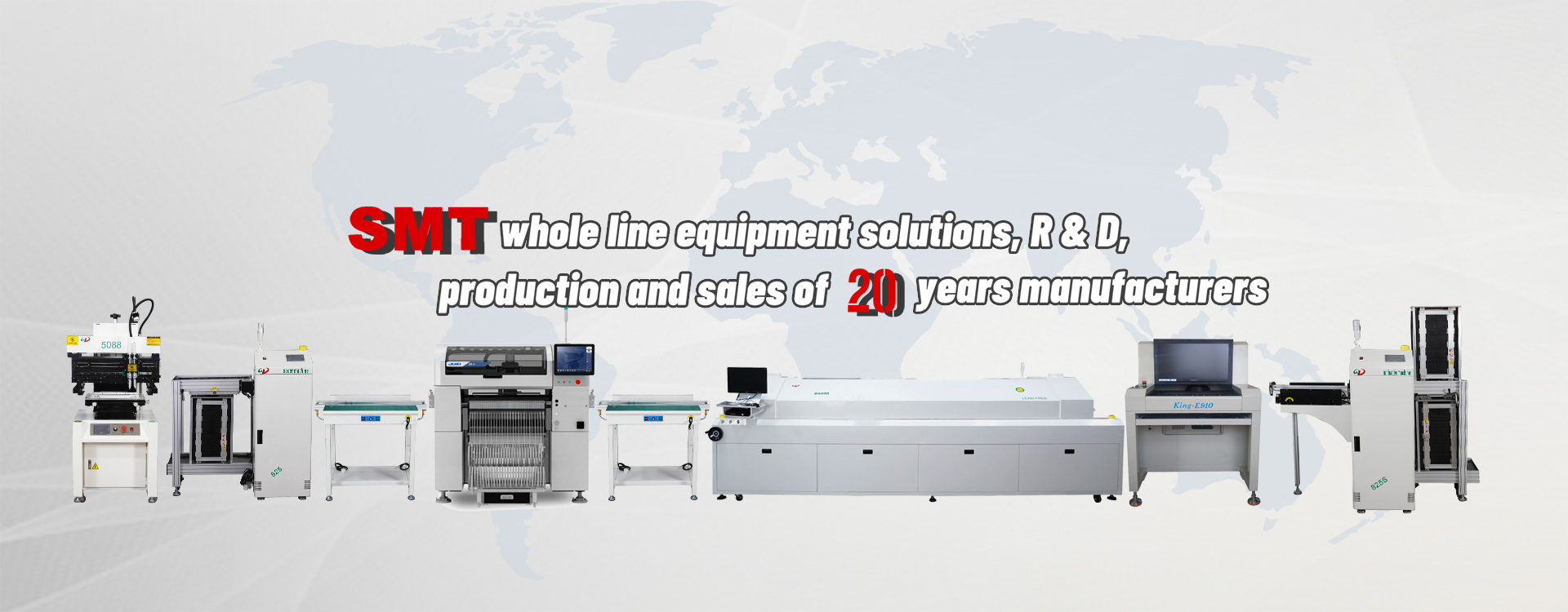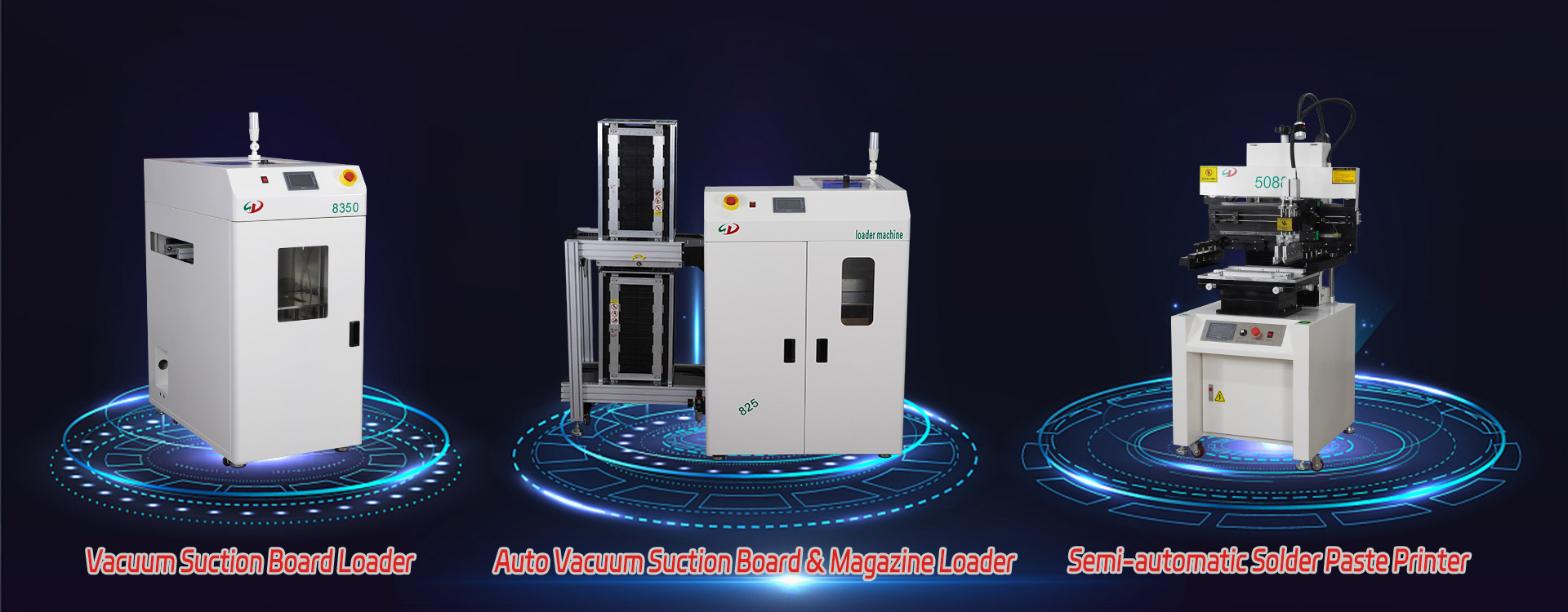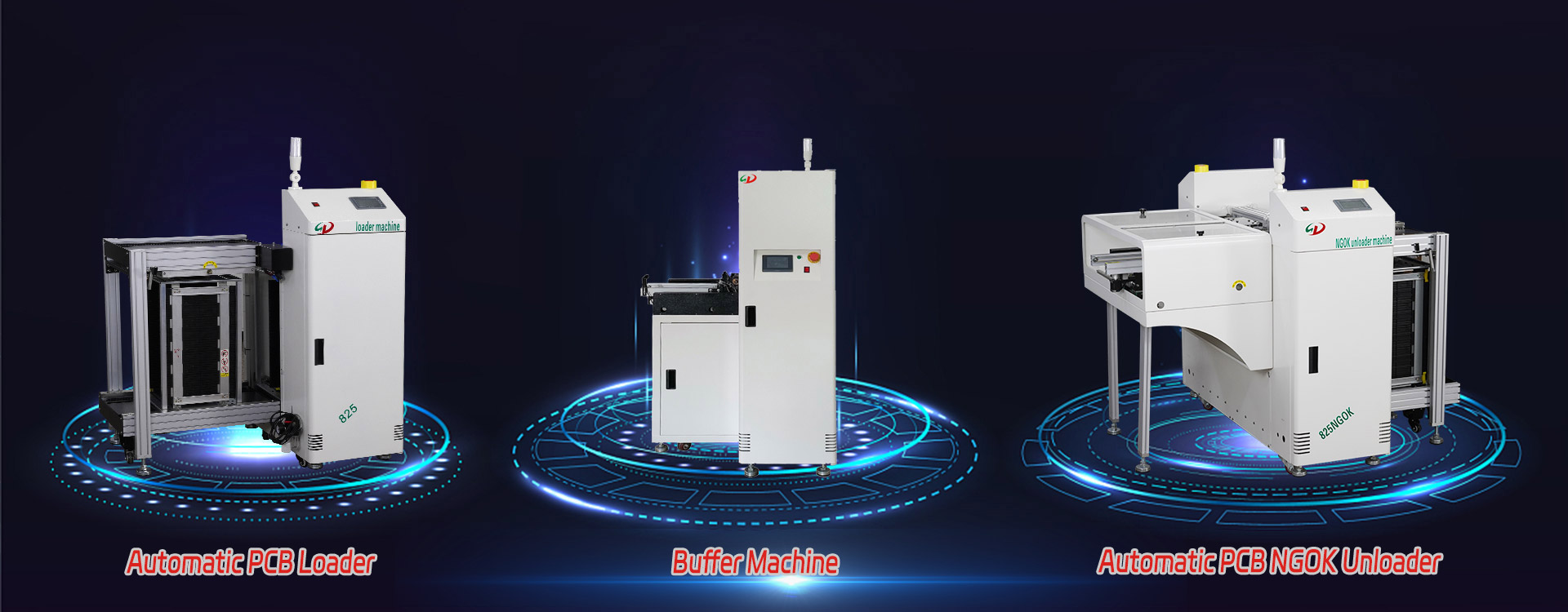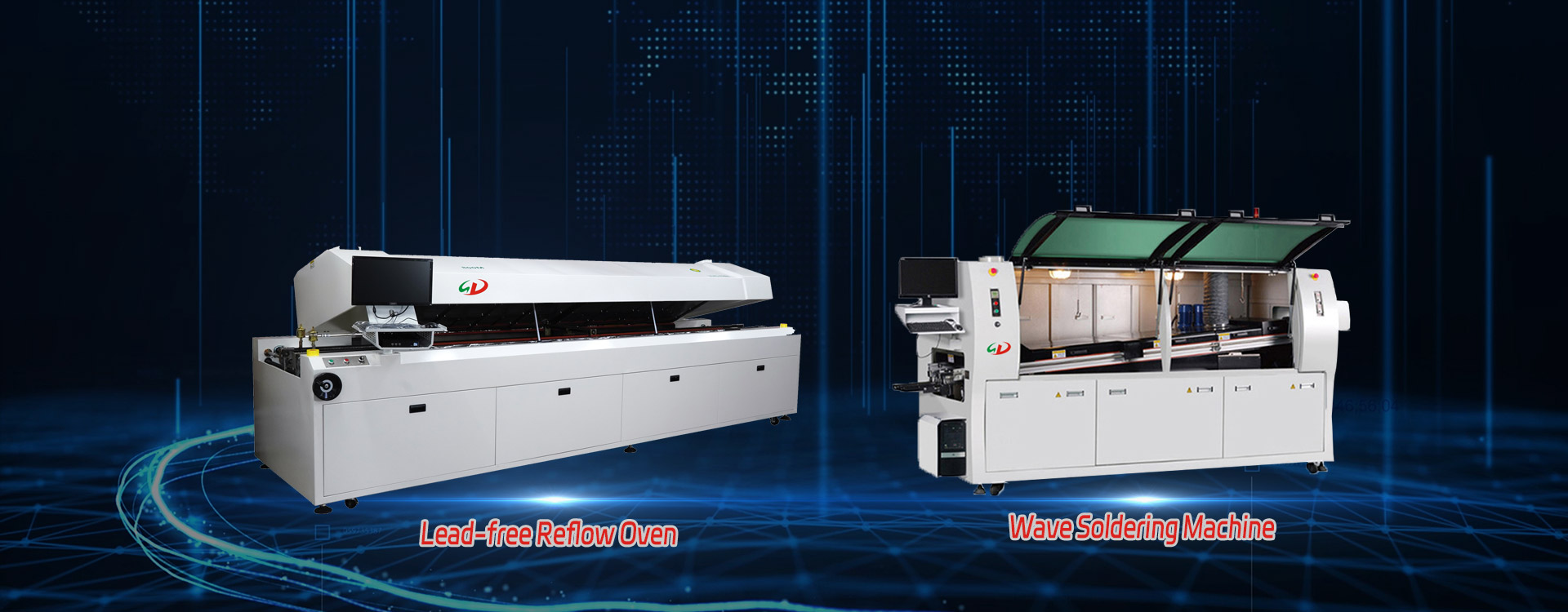|
Manufacturer |
SD |
|---|---|
| Model | 350 |
MenuProductProduct classification
Contact US

Hotline:+86 13554758169
Tel:+86 0755-29878225
Wave Soldering Machine 350
Wave soldering refers to the molten filler metal, through the electric pump or electromagnetic pump to spray into the design requirements of the solder wave peak, can also be formed by injecting nitrogen into the solder pool, so that the printed board pre-equipped with components through the solder wave peak, in the solder liquid surface to form a specific shape of the solder peak, the PCB loaded with components at a specific Angle, The process of brazing the solder joint through the crest of the solder metal with a certain immersion depth is called crest welding. Advantages of wave soldering process:
1. Save labor and materials, improve production efficiency and reduce production costs;
2. The circuit board contact high temperature soldering time is short, can reduce the warping deformation of the circuit.
3. Eliminate the interference and influence of human factors on product quality, improve the quality and reliability of solder joints;
4. The solder of the wave welding machine is full of activity, which is conducive to improving the quality of the solder joint
5. Due to the use of a good exhaust system, improve the operating environment and the physical and mental health of the operator;
6. The surface of the solder floating layer oxidation meter isolates the air, as long as the solder wave is exposed in the air, the oxidation time is reduced, and the solder waste caused by the oxidation slag can be reduced.
7. Good consistency, to ensure the consistency of product installation quality and process standardization, standardization;
8. Can complete the work that cannot be done manually
1. Save labor and materials, improve production efficiency and reduce production costs;
2. The circuit board contact high temperature soldering time is short, can reduce the warping deformation of the circuit.
3. Eliminate the interference and influence of human factors on product quality, improve the quality and reliability of solder joints;
4. The solder of the wave welding machine is full of activity, which is conducive to improving the quality of the solder joint
5. Due to the use of a good exhaust system, improve the operating environment and the physical and mental health of the operator;
6. The surface of the solder floating layer oxidation meter isolates the air, as long as the solder wave is exposed in the air, the oxidation time is reduced, and the solder waste caused by the oxidation slag can be reduced.
7. Good consistency, to ensure the consistency of product installation quality and process standardization, standardization;
8. Can complete the work that cannot be done manually
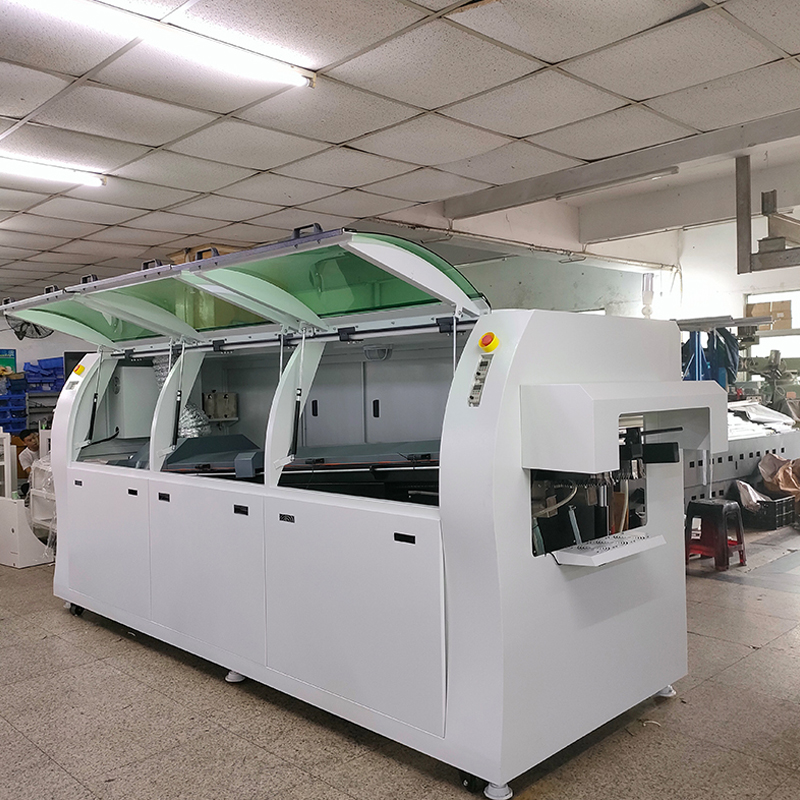
Wave Soldering Machine
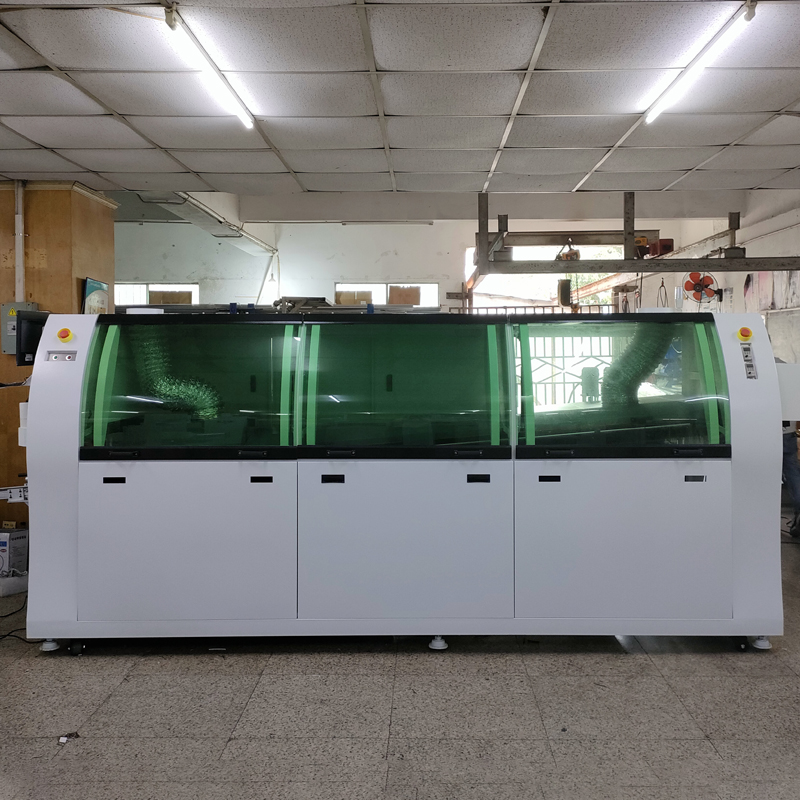
Wave Soldering Machine
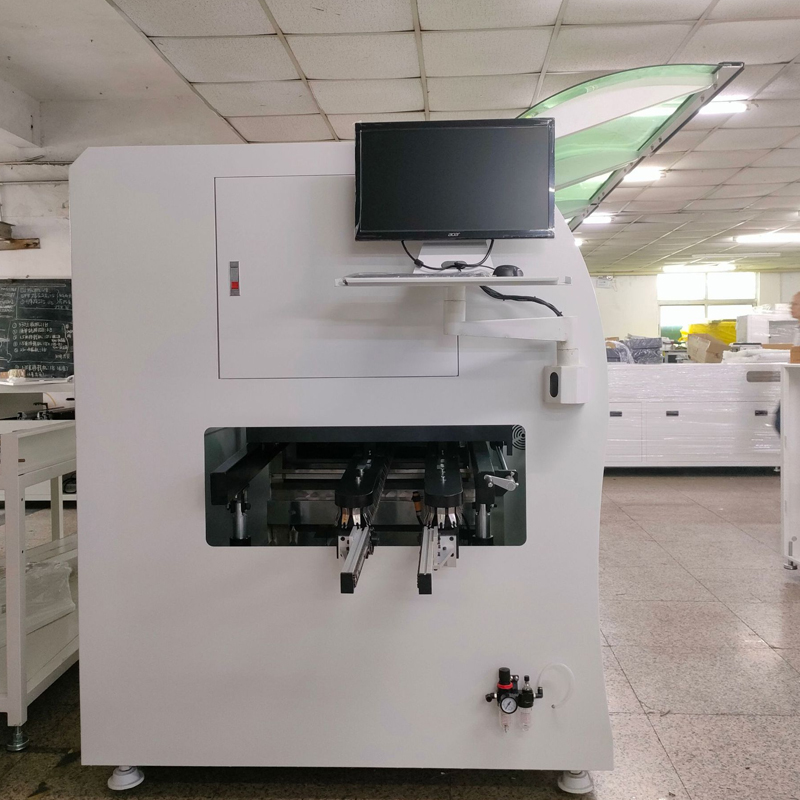
Wave Soldering Machine
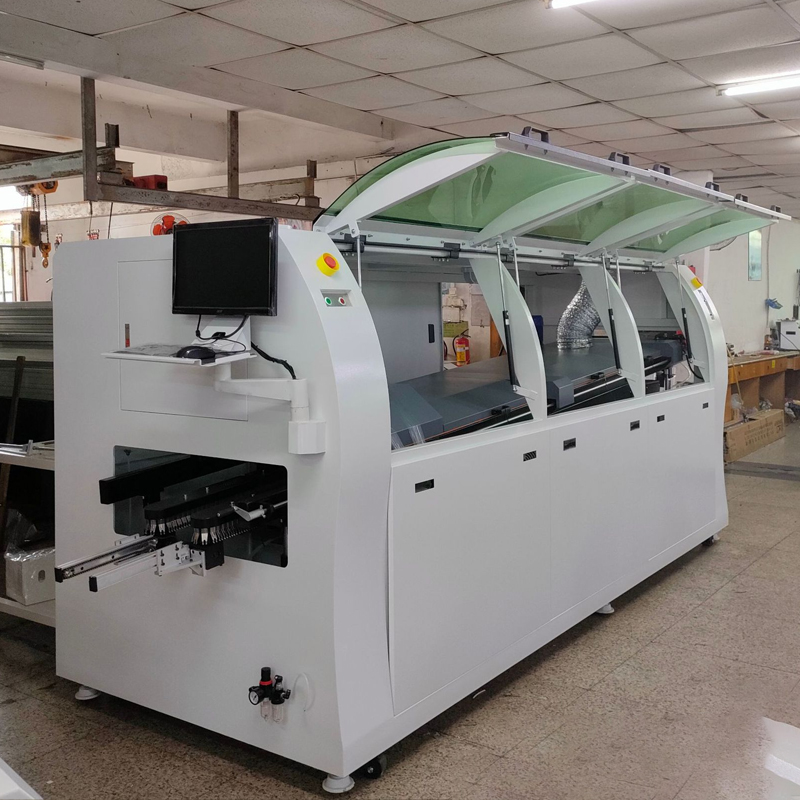
Wave Soldering Machine

Wave Soldering Machine
The wave soldering machine is mainly composed of transport belt, flux adding area, preheating area and tin furnace.
The main purpose of the transport belt is to send the circuit base plate into the wave soldering machine, along the way through the flux adding area, preheating area, tin furnace, etc. The flux adding area is mainly composed of infrared sensors and nozzles. The function of the infrared sensor is to detect whether there is a circuit board entering, and if there is a sensor, it will measure the width of the circuit board. The function of the flux is to form a protective film on the welded surface of the circuit base plate.
The preheating zone provides enough temperature to form a good solder joint. Infrared heating can make the circuit base plate heat evenly. In a two-crest system, the turbulent portion of the wave prevents solder leakage, which ensures proper solder distribution across the circuit board. The solder penetrates through the slit at a high speed, thus penetrating the narrow gap. The spray direction is the same as that of the board. The turbulent wave alone does not properly weld the component, it leaves uneven and excess solder on the solder joints, so a second wave is required.
The second laminar or smooth wave eliminates the burrs and Bridges created by the first turbulent wave. Laminar waves are actually the same as those used in traditional through-hole cartridge assemblies. Therefore, when the conventional components are welded on a machine, the turbulent waves can be turned off and the conventional components can be welded with laminar waves.
The main purpose of the transport belt is to send the circuit base plate into the wave soldering machine, along the way through the flux adding area, preheating area, tin furnace, etc. The flux adding area is mainly composed of infrared sensors and nozzles. The function of the infrared sensor is to detect whether there is a circuit board entering, and if there is a sensor, it will measure the width of the circuit board. The function of the flux is to form a protective film on the welded surface of the circuit base plate.
The preheating zone provides enough temperature to form a good solder joint. Infrared heating can make the circuit base plate heat evenly. In a two-crest system, the turbulent portion of the wave prevents solder leakage, which ensures proper solder distribution across the circuit board. The solder penetrates through the slit at a high speed, thus penetrating the narrow gap. The spray direction is the same as that of the board. The turbulent wave alone does not properly weld the component, it leaves uneven and excess solder on the solder joints, so a second wave is required.
The second laminar or smooth wave eliminates the burrs and Bridges created by the first turbulent wave. Laminar waves are actually the same as those used in traditional through-hole cartridge assemblies. Therefore, when the conventional components are welded on a machine, the turbulent waves can be turned off and the conventional components can be welded with laminar waves.
Previous
Wave Soldering Machine 300
Next
Nothing

